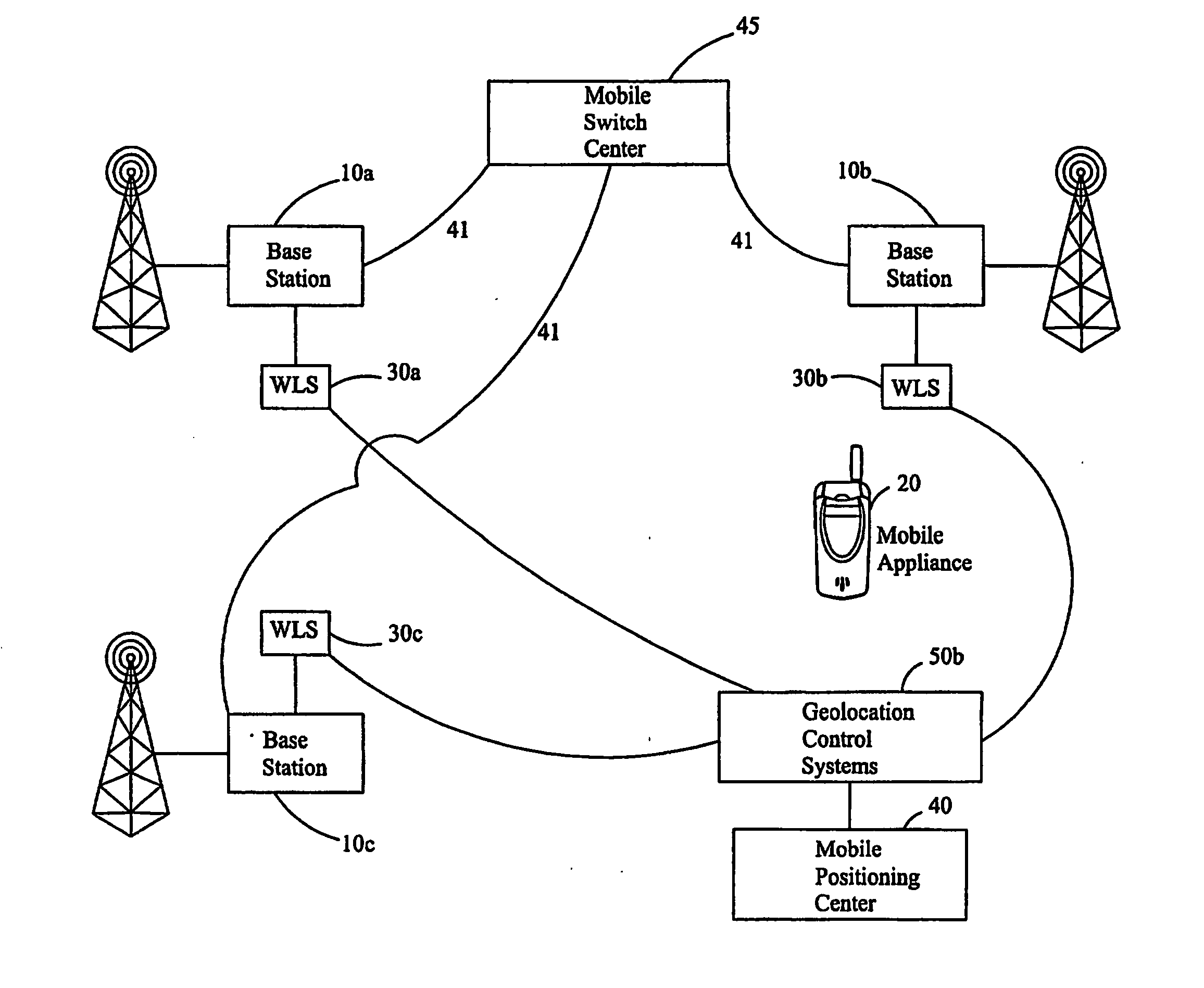Method For Sparse Network Deployment Accuracy Enhancements
- Summary
- Abstract
- Description
- Claims
- Application Information
AI Technical Summary
Problems solved by technology
Method used
Image
Examples
Embodiment Construction
[0025] The present disclosure is directed towards methods to provide location related measurements in the “no location areas” as described above.
[0026] The disclosure presents various solutions that obviate the deficiencies in the prior art. The disclosure envisions all combinations and permutations of the following techniques in order to determine a location estimate. The disclosure also envisions use of the following described techniques individually or in combination conditioned on determining if a location hole exists,” no location” area, or not at all sites or some designated by different conditions. Conditions used as selection criteria include proximity, heard or not heard signal, signal quality, etc.
[0027] One location determining technique available for “no location” areas is the use of known data sequences (such as training sequence codes) in the transmission and having sites perform ambiguity function processing to detect a signal. This approach requires no data to be s...
PUM
 Login to View More
Login to View More Abstract
Description
Claims
Application Information
 Login to View More
Login to View More - R&D
- Intellectual Property
- Life Sciences
- Materials
- Tech Scout
- Unparalleled Data Quality
- Higher Quality Content
- 60% Fewer Hallucinations
Browse by: Latest US Patents, China's latest patents, Technical Efficacy Thesaurus, Application Domain, Technology Topic, Popular Technical Reports.
© 2025 PatSnap. All rights reserved.Legal|Privacy policy|Modern Slavery Act Transparency Statement|Sitemap|About US| Contact US: help@patsnap.com



